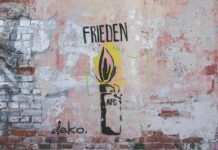The construction of a secure quantum Internet is progressing. After last year, it could be shown that the Transmission of encrypted messages over great distances via satellite is possible, have now done Austrian researchers, a further decisive step: Robert Ursin of the University of Vienna and his colleagues have succeeded in developing a stable quantum build physically encrypted network between four active participants. Everyone can communicate with each via dedicated data lines, without that unauthorized eavesdroppers would have a Chance, listen in. Because the number of participants would be easy to expand, could pave the method to a wide application of quantum cryptography in the Internet of the path, write the researchers Ursin in the journal “Nature”.
Manfred Lindinger
editor in the Department “nature and science”.
F. A. Z.
The quantum cryptography promises from quantum-physical reasons, a tap-proof communication. The researchers Ursin use for your Experiment, the phenomenon of quantum entanglement, the designated Albert Einstein once called spooky action at a distance. This is a unique property of quantum physics. About the polarization direction of the light changes a particle in one place, so changes immediately, the polarization state of the entangled partner in the other location.
In the case of quantum cryptography to transmit the encrypted Code with the help of pairs of highly entangled particles of light, the transmitter and receiver parts. A spy tries to measure the property of a photon, before it reaches the receiver, the transmitter will immediately recognize. Because of the Partner of the tapped light particle immediately changed its properties. The eavesdropping revealed. Both communication partners generate a new key.
the light quantum haunt between four nodes
so Far settled in this manner, usually, however, only two participants connect, even over distances of several hundred kilometers. To a plurality of nodes networked together, it took so far of a large technical effort. Each participant had to have its own light source, with which he produced the photons for quantum messages. Each of the other data line makes such a network prone to errors and limits the communication of the partners to each other. Ursin and his colleagues have been able to resolve the Dilemma with a new network architecture.
All four of the participants will now be supplied from a Central light source, with pairs of entangled photons. The photon pairs are generated in a rainbow of different wavelengths, which makes it possible to distribute clear among the participants. Each participant is thus able to generate a quantum key, and to use for a secure communication with another Partner.




